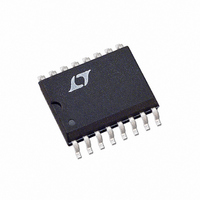LT1184FCS Linear Technology, LT1184FCS Datasheet - Page 16

LT1184FCS
Manufacturer Part Number
LT1184FCS
Description
IC SW REG CCFL CONTRAST 16-SOIC
Manufacturer
Linear Technology
Datasheet
1.LT1184FCSPBF.pdf
(24 pages)
Specifications of LT1184FCS
Applications
Converter, CCFL, LCD
Voltage - Input
3 ~ 30 V
Number Of Outputs
1
Operating Temperature
0°C ~ 100°C
Mounting Type
Surface Mount
Package / Case
16-SOIC (3.9mm Width)
Lead Free Status / RoHS Status
Contains lead / RoHS non-compliant
Voltage - Output
-
Other names
LT1184FCSW
LT1184FCSW
LT1184FCSW
Available stocks
Company
Part Number
Manufacturer
Quantity
Price
Part Number:
LT1184FCS
Manufacturer:
LINEAR/凌特
Quantity:
20 000
Company:
Part Number:
LT1184FCS#PBF
Manufacturer:
LT
Quantity:
17
Part Number:
LT1184FCS#PBF
Manufacturer:
LINEAR/凌特
Quantity:
20 000
Part Number:
LT1184FCS#TRPBF
Manufacturer:
LINEAR/凌特
Quantity:
20 000
APPLICATIONS
LT1182/LT1183/LT1184/LT1184F
change in quiescent current. An active low shutdown pin
typically reduces total supply current to 35 A by shutting
off the 2.4V regulator and locking out switching action for
standby operation. The ICs incorporate undervoltage lock-
out by sensing regulator dropout and locking out switch-
ing below about 2.5V. The regulators also provide thermal
shutdown protection that locks out switching in the pres-
ence of excessive junction temperatures.
A 200kHz oscillator is the basic clock for all internal timing.
The oscillator turns on an output via its own logic and
driver circuitry. Adaptive anti-sat circuitry detects the
onset of saturation in a power switch and adjusts base
drive current instantaneously to limit switch saturation.
This minimizes driver dissipation and provides rapid turn-
off of the switch. The CCFL power switch is guaranteed to
provide a minimum of 1.25A in the LT1182/LT1183/
LT1184/LT1184F and the LCD power switch is guaranteed
to provide a minimum of 0.625A in the LT1182/LT1183.
The anti-sat circuitry provides a ratio of switch current to
driver current of about 50:1.
Simplified Lamp Current Programming
A programming block in the LT1182/LT1183/LT1184/
LT1184F controls lamp current, permitting either grounded-
lamp or floating-lamp configurations. Grounded configu-
rations control lamp current by directly controlling one-
half of actual lamp current and converting it to a feedback
signal to close a control loop. Floating configurations
control lamp current by directly controlling the Royer’s
primary side converter current and generating a feedback
signal to close a control loop.
Previous backlighting solutions have used a traditional
error amplifier in the control loop to regulate lamp current.
This approach converted an RMS current into a DC voltage
for the input of the error amplifier. This approach used
several time constants in order to provide stable loop
frequency compensation. This compensation scheme
meant that the loop had to be fairly slow and that output
overshoot with startup or overload conditions had to be
carefully evaluated in terms of transformer stress and
breakdown voltage requirements.
The LT1182/LT1183/LT1184/LT1184F eliminate the error
amplifier concept entirely and replace it with a lamp
16
U
INFORMATION
U
W
U
current programming block. This block provides an easy-
to-use interface to program lamp current. The program-
mer circuit also reduces the number of time constants in
the control loop by combining the error signal conversion
scheme and frequency compensation into a single capaci-
tor. The control loop thus exhibits the response of a single
pole system, allows for faster loop transient response and
virtually eliminates overshoot under startup or overload
conditions.
Lamp current is programmed at the input of the program-
mer block, the I
regulator and accepts a DC input current signal of 0 A to
100 A. This input signal is converted to a 0 A to 500uA
source current at the CCFL V
is simply a current-to-current converter with a gain of five.
By regulating the I
can be set with DAC, PWM or potentiometer control. The
typical input current programming range for 0mA to 6mA
lamp current is 0 A to 50 A.
The I
oscillate with capacitance greater than 10pF. For example,
loading the I
oscillation and erratic CCFL regulator operation because
of the probe’s respective input capacitance. A current
meter in series with the I
lation due to its shunt capacitance. Use a decoupling
resistor of several kilo-ohms between the I
control circuitry if excessive stray capacitance exists. This
is basically free with potentiometer or PWM control as
these control schemes use resistors. A current output
DAC should use an isolating resistor as the DAC can have
significant output capacitance that changes as a function
of input code.
Grounded-Lamp Configuration
In a grounded-lamp configuration, the low voltage side of
the lamp connects directly to the LT1182/LT1183/LT1184/
LT1184F DIO pin. This pin is the common connection
between the cathode and anode of two internal diodes. In
previous grounded-lamp solutions, these diodes were
discrete units and are now integrated onto the IC, saving
cost and board space. Bi-directional lamp current flows in
the DIO pin and thus, the diodes conduct alternately on half
CCFL
pin is sensitive to capacitive loading and will
CCFL
CCFL
pin with a 1 or 10 scope probe causes
CCFL
pin. This pin is the input of a shunt
pin, the input programming current
CCFL
C
pin. The programmer circuit
pin will also produce oscil-
CCFL
pin and the













